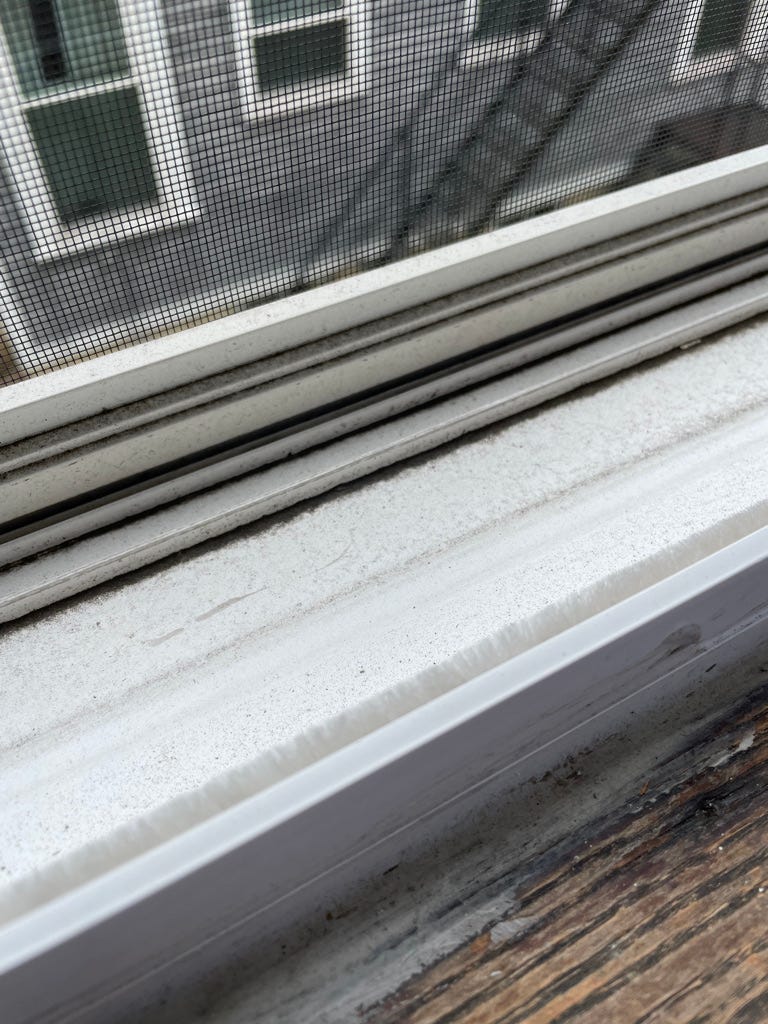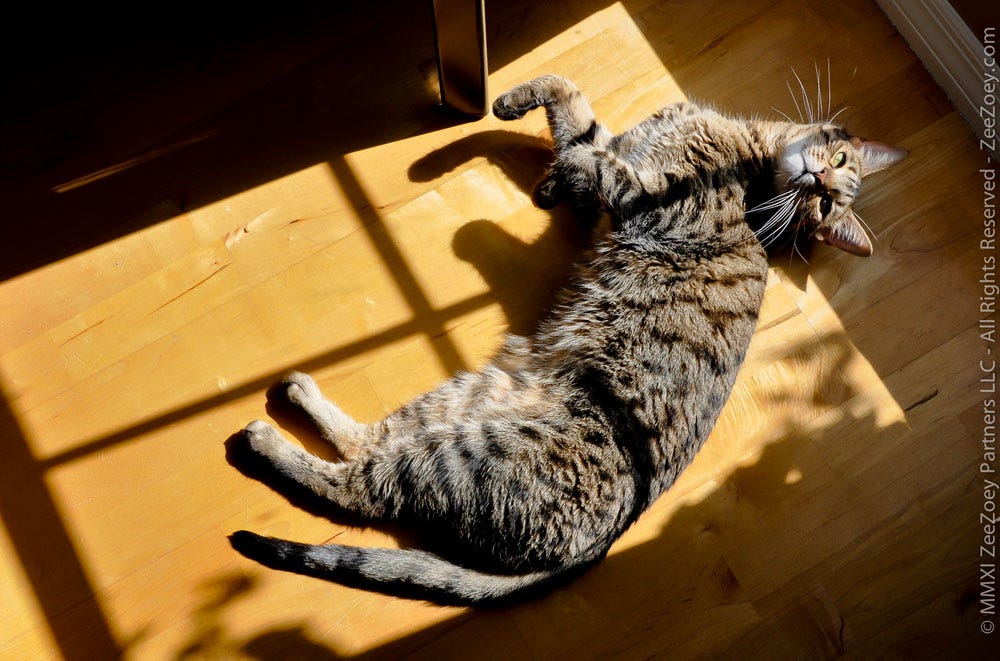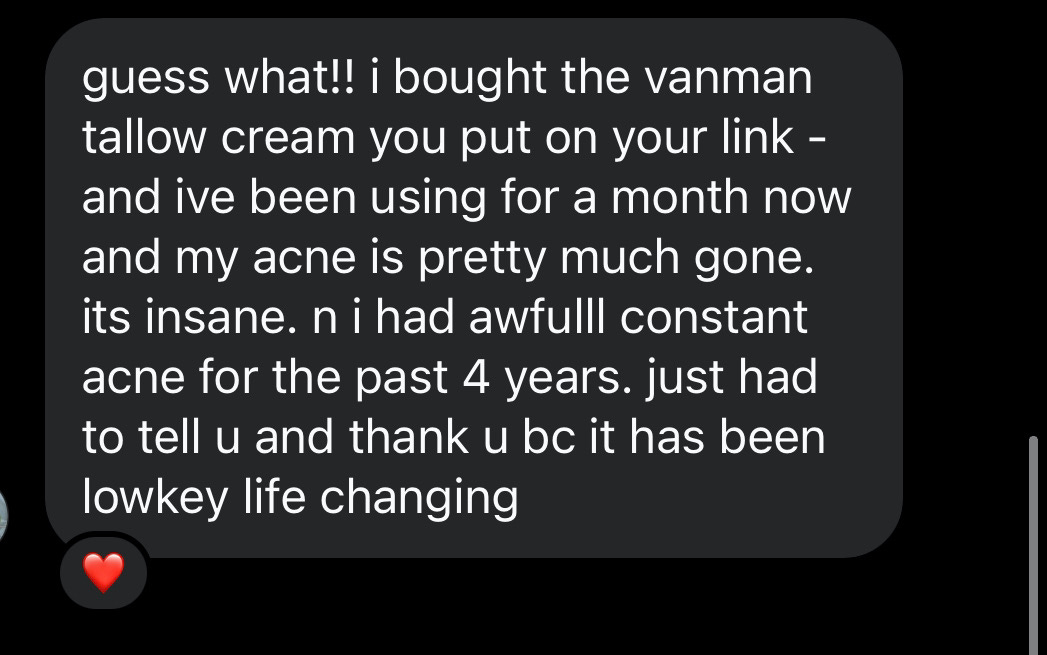Every way to fix your skin
Look like a living bronze statue
How do you fix bad skin?
Most skincare protocols focus on the skin itself, neglecting the fact that every part of your body is connected and skin quality is merely an indication of overall health.
Instead, here are 15 techniques for tan, smooth, firm skin that are also an important part of health in general.
The purpose of this article is to give you a high level overview of these techniques. There is not enough space to go into much detail, and while I’ve written about many of them elsewhere, if you want more specifics feel free to drop a comment so I know what to focus on in the future.
1. Vitamin A (retinol)
Vitamin A is the primary skin vitamin. There are two common misconceptions:
1: It comes from carrots and plants.
This is entirely untrue; retinol, the active form of vitamin A, is only found in animal foods. Beta carotene comes from plants, and it has to be converted into vitamin A by the body, which it will only do when levels are excessively low.
The best sources are high quality dairy fat (milk, ice cream, butter), egg yolks, and liver.
2: It’s toxic
“Vitamin A” can be toxic, but only the synthetic varieties. Accutane, the DNA-damaging skin medicine, is actually a synthetic form.
Vitamin A is very important for your skin to actually produce the proteins that make up the skin matrix, and deficiency can cause eczema, acne, dry skin, chicken skin, etc.
2. Seed Oils & Vitamin E
I talk about this quite often, but check these articles for a refresher:
Tl;dr: seed oils get stuck in your skin, where they oxidize, causing oxidative damage (especially in the sun) which leads to sunburn and other issues. Avoiding them and detoxing with Vitamin E is a great way to fix it the problem.
Eating too many nuts or seeds is just as problematic as seed oils themselves. Eat in moderation if at all.
3. Collagen
Your skin (and all connective tissue) is made of collagen. Wouldn’t it make sense to eat more collagen for better skin?
There are a few ways to get it:
Supplemental form, either in powder or liquids (many people digest liquid better)
Liquid collagen is basically bone broth, which you can buy or make.
if you buy it, make sure to find one that is frozen and thaws into something rather gelatinous
If you make it, chicken feet are the best (and cheapest) bone source.
You can also make jello, probably the most delicious option. Buy grass fed gelatin, sprinkle on top of organic fruit juice, bring to a simmer, pour into glass containers, and stick them in the fridge
Eat stews and soups made with gelatinous, tough cuts of meat
Taking vitamin C from a whole food source also helps your body make its own.
4. Air quality
Skin detoxifies harmful substances through the sweat and oil it produces.
On the other hand, it also absorbs everything it touches.
That’s why poor air quality is doubly toxic: the first time when the pollution enters your lungs and needs to escape the body through the skin, and again as it touches the surface of the skin and is absorbed into the blood.
Living in a city with bad air pollution is like a fish swimming in polluted water. You know how all the coral reefs are dying? Same thing is happening to you if you live in such a city.
You can buy air filters in your apartment that will clear out the smog, as well as window air filters if you like to keep the windows open.

While you’re at it, cut out the artificial fragrances from candles, air fresheners, and cleaners too.
5. Accidental toxins absorbed
It’s not just air that can pollute your skin. There are many things that come in contact with your skin that you don’t even realize, and since the skin absorbs it all, you must critically examine everything that you touch on a daily basis.
From the sharpies the bouncer at the bar marks your hand with, to the plastic (spandex/polyester) underwear you sweat in at the gym, ditch anything that is artificial or toxic.
Examples include:
Toxic tap water in faucet/shower. Get a shower filter.
Plastic clothing/towels/sheets. You want organic cotton, hemp, linen, wool, silk, and leather.
Cosmetics like tampons/q-tips/cotton balls. Get organic ones only.
6. Purposeful skin toxins
While most people don’t actively think about the above toxins, there is a whole class of toxic substances people purposefully apply to their skin.
Ironically, most of them are done in an attempt to improve skin health, yet they will only do the opposite.
Common examples:
Sunscreen (follow this guide for tanning instead)
Lotions/moisturizers
Makeup and makeup remover (you will “need” less of it as skin health improves anyway)
Soaps (hand soap, face soap, shampoo) — easy to get good quality versions
Spray tans — just get a real tan
Bug spray — wear long clothes and use fire or other essential oils that fight mosquitoes instead
Whatever the latest Sephora chemistry experiment is
Find natural alternatives, or do without. Toups and Co. is a great woman-oriented cosmetics company, and Bronners bar soaps have very solid ingredients.
7. Moisturization
While skin should moisturize itself (retinol deficiency is one of the biggest causes of dry skin), it can be helpful to attack the problem from both angles.
Grass fed tallow is full of vitamin A, so naturally it is the best moisturizer.
This one is my personal favorite, and has fixed many people’s stubborn skin issues.
8. Sunlight and red light therapy
The wavelengths of light in the red to near-infrared range increase the energy your mitochondria produce, and that’s why they have such wide-ranging benefits that can seem at times “too good to be true.”
I works because every cell functions better upon exposure to such light, which actually penetrates quite deep into your tissues.
If you don’t want to buy into the machine fad, the sun of course is the original source of such wavelengths.
We could enumerate every “benefit” that sunlight has, but it would be such an extensive list that’s not really worth it. Just take a lesson from the animal playbook:
Sun good.

9. Niacinamide
Niacinamide (vitamin B3) is a popular substance these days, mostly for its energy benefits. It’s often used with red light therapy, and given its effect on mitochondrial energy production, it makes sense that it would also help strengthen your skin and make it smoother.
It’s used in the cosmetics industry in various chemical-filled formulas, but I’d just take it orally— it is quite cheap.
Common doses are 500mg, but I’ve heard a lot of people do better with 50mg.
For the former dose, I would try these pills (use the code “tanman” for 15% off), or this powder for the latter.
10. Gut Health
Remember how I talked about the skin as a primary detox pathway for harmful toxins that have accumulated in your body?
Well, one of the effects of poor gut health is a weakened intestinal barrier, which allows all sorts of toxins from your food to leak into your blood stream.
These could include heavy metals, pesticides, endotoxin, and even undigested food,which is safe in your intestines but bad in your blood stream.
I notice that whenever I have a bout of bad digestion, I’ll start to break out a day or two later.
Gut health is an entire topic on its own, and is one of the most difficult things to fix, but it’s something to be aware of.
11. Sauna
If there is a lot of toxic stuff that you need to get out of your skin, sweating is the best way to do that. And nothing causes sweating like a sauna.
Many fat soluble toxins won’t come out via any other way, and the diversity and duration of traditional cultures that have a sauna-like therapy speaks for itself.
From Native Americans to Finns and Central Europeans, sweating was always considered a health-promoting activity. It’s also great for your metabolism, which I go into more below.
12. Movement/dry brushing
On the topic of detoxification, one of the most important channels by which toxins move out of the body is the lymphatic system.
Similar to your blood, lymphatic fluid flows around the body carrying nutrients to different tissues, and toxins away from them.
But it doesn’t have a heart to pump the fluid around— this fluid only moves when your body moves.
Walking, as well as dry brushing (literally using a dry brush on your skin), can move these fluids around, helping them do their job.
How to use this guide
I will take a brief interlude here to offer a few tips on how to use this guide:
If your skin is good, then keep doing what you’re doing
If your skin needs work, try experimenting with the items on this list that you currently do the least of
Start with the cheapest things first. They are often the most effective solutions (e.g. sunlight and eating liver or raw milk).
It’s always best to change things one at a time, so you can see what works on you and what doesn’t
If you don’t see a clear skin benefit from any particular technique, it’s all good because everything here promotes general health anyway
If you still struggle with skin health after months of these techniques, there are likely more fundamental problems you need to resolve…
More techniques
The above techniques are pretty widely accepted (by most actually healthy people, if not your dermatologist), and if you implement them, 90% of the time your skin will turn out great.
However, I have a few more controversial tips that are more advanced. Become a paid subscriber if you want to check them out.
Keep reading with a 7-day free trial
Subscribe to Tan Land: Natural Health and Beauty to keep reading this post and get 7 days of free access to the full post archives.





